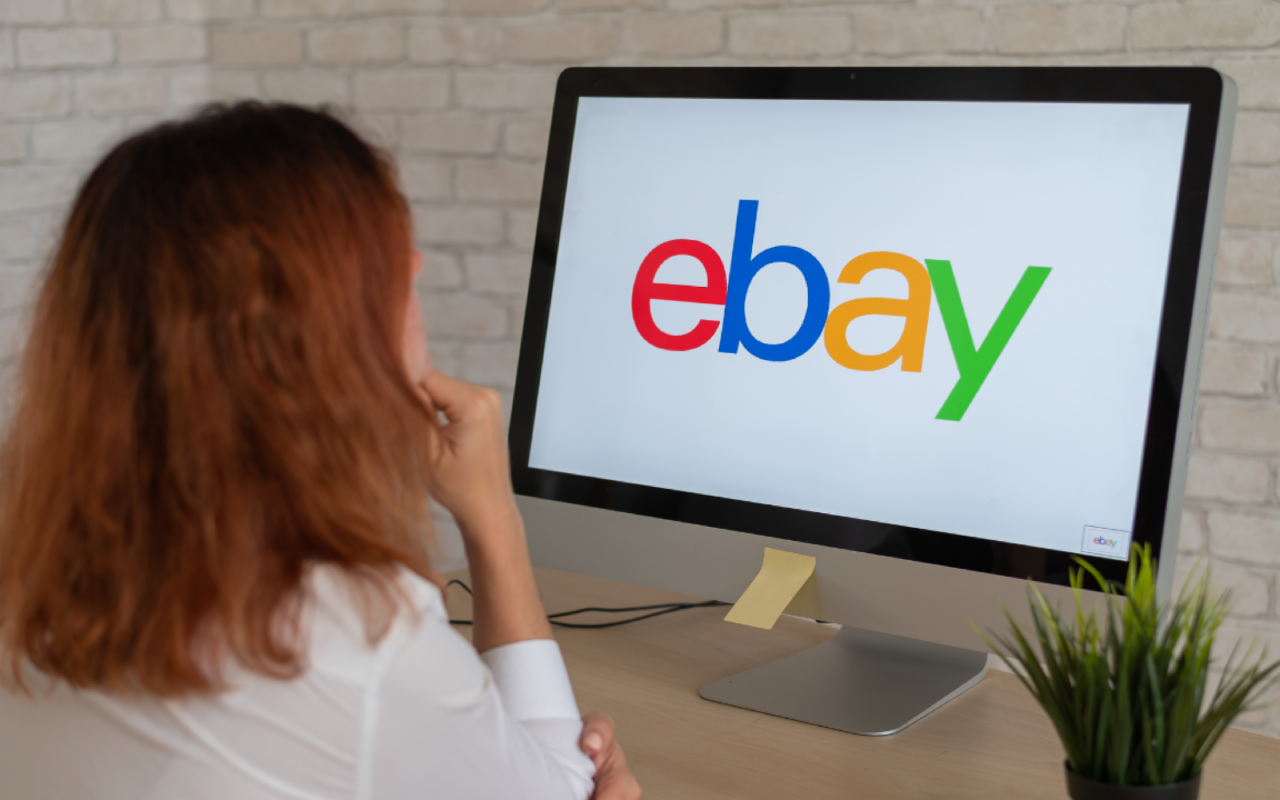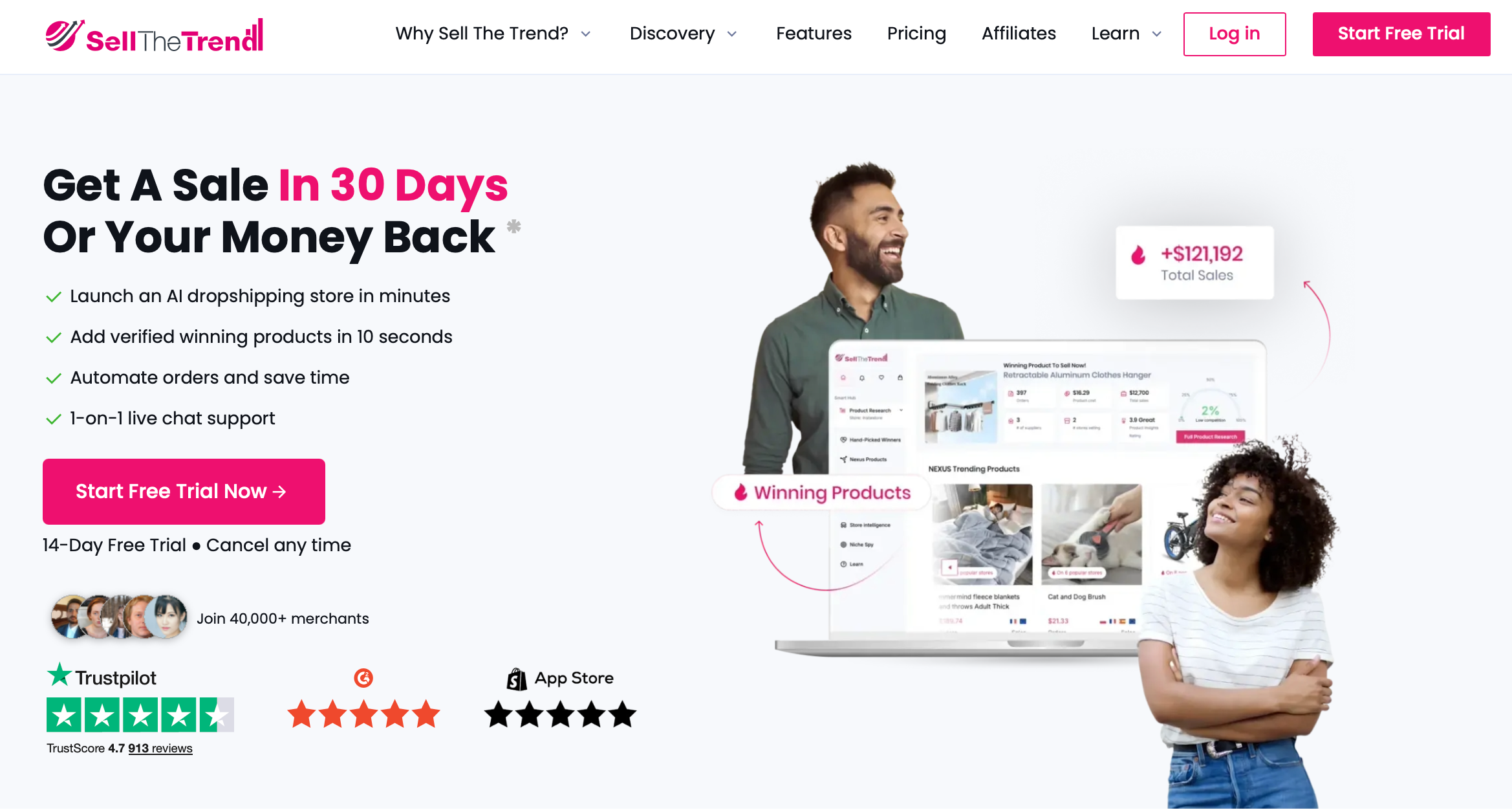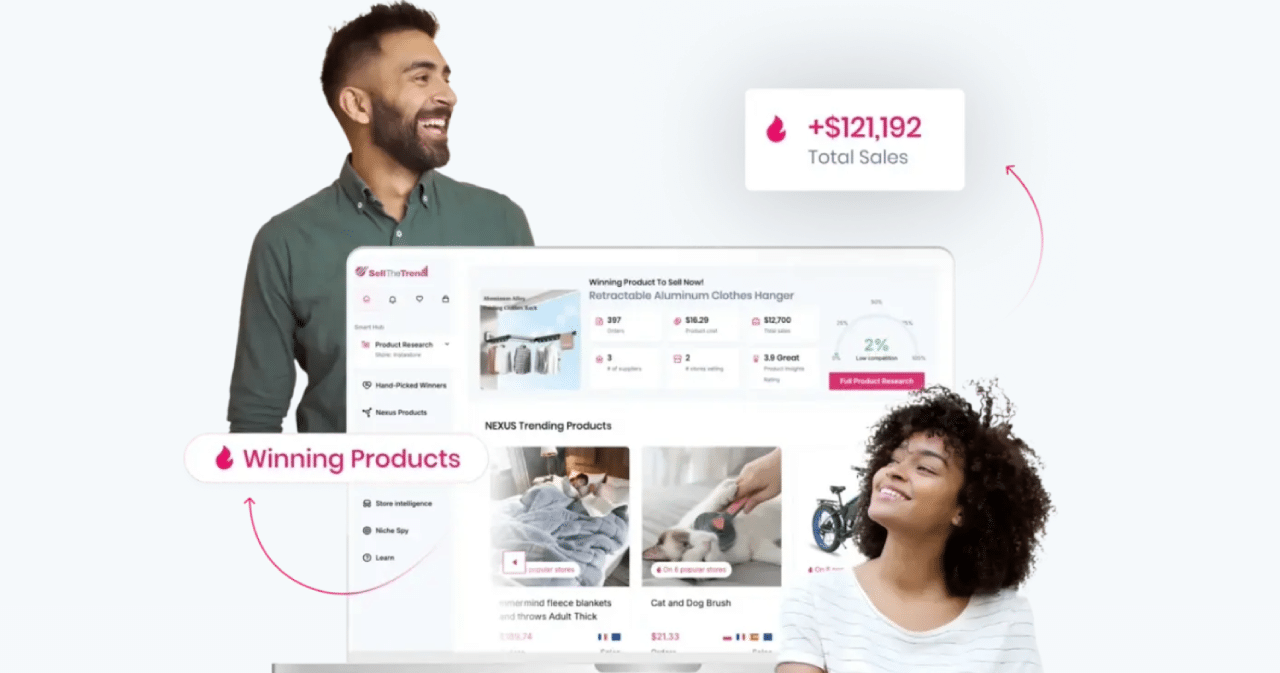Is Selling On eBay Worth It? Find Out Here!
Contents

eBay used to be the go-to place to sell almost anything. But things have changed. With more fees, more sellers, and more rules, many people are now asking: is selling on eBay worth it?
Some say yes—it’s still a great way to make extra cash. Others say it’s too much hassle for too little profit. The truth depends on what you’re selling, how often, and what you’re willing to deal with.
In this article, we’ll break it all down so you can decide if eBay is still the right place for you.
Key Takeaways
- You can make real profit on eBay, but only if you manage fees, shipping, and sourcing smartly.
- High-demand items, such as used electronics, sneakers, and collectibles, sell the fastest and offer better margins.
- Use the “Sold Listings” filter to see what buyers are actually paying, not just what’s listed.
- Tools like Sell The Trend help you find winning products before they saturate the marketplace.
- Fees can eat into your earnings fast—factor in eBay’s cut, shipping costs, and potential returns when pricing.
Is Selling on eBay Worth It?
Short answer: Yes, selling on eBay can be worth it, but only if you understand the fees, market competition, and the type of products that still perform well. For casual sellers or side hustlers, it offers easy access to millions of buyers. But for others, the profit margins may not justify the effort.
This table provides readers with a quick overview before delving deeper into each benefit and drawback.
eBay Selling: Pros vs Cons
| Pros | Cons |
|---|---|
| Access to a global buyer audience | Up to 15% in total fees per sale |
| No upfront listing costs for most categories | Risk of buyer scams and return abuse |
| Great for used, vintage, and collectible items | Strict performance standards and account metrics |
| Beginner-friendly platform with simple listing tools | Tough competition from top-rated and high-volume sellers |
| eBay’s buyer protection increases trust and conversions | Profit margins can shrink due to fees and shipping costs |
What Are the Main Benefits of Selling on eBay?
The main benefits of selling on eBay include global reach, no upfront listing fees for most categories, and a trusted platform for both new and experienced sellers.
It’s especially strong for used, niche, or collectible items. Plus, eBay’s buyer protection program builds trust and helps increase your chances of making sales.
1. Access to a Global Customer Base
eBay has over 130 million active buyers worldwide. That means your listings aren’t limited to just your local area—they can reach customers across the U.S., Europe, Australia, and more. Whether you’re selling rare collectibles or trending gadgets, eBay connects you with international shoppers 24/7. For niche or hard-to-find items, this wide exposure is a huge advantage.
2. No Upfront Costs to List (in Most Categories)
Unlike some marketplaces that charge a fee just to post an item, eBay allows up to 250 free listings per month for most casual sellers. That means you can test out products without spending anything upfront. Fees only kick in when your item sells (final value fees), making it low-risk for beginners trying to learn the ropes.
3. Great for Used, Collectible, or Niche Products
eBay is one of the few platforms where used items actually thrive. From vintage clothing to rare trading cards and discontinued electronics, buyers actively search for items they can’t find in stores. If you’re decluttering your home, flipping garage sale finds, or selling discontinued parts, eBay gives you access to buyers actively looking for those specific items.
4. Easy to Use, Even for Beginners
The eBay interface is beginner-friendly. Listing an item takes just a few steps—upload photos, set a price, write a short description, and choose shipping options. Plus, eBay offers tools like their mobile app, pricing suggestions, and seller dashboards that make managing sales straightforward. You don’t need advanced tech skills or a full business plan to get started.
5. Buyer Protection Adds Trust
eBay’s Money Back Guarantee covers most purchases, which gives buyers confidence when buying from individual sellers. As a result, shoppers are more willing to buy—even from new sellers. And for you, the seller, this added trust often means more conversions and less hesitation at checkout. Just make sure you follow eBay’s rules and provide tracking info to stay protected.
What Are the Downsides of Selling on eBay?
While eBay offers a large market, it also comes with downsides. Sellers face fees of up to 15% per sale, buyer scams like false “item not received” claims, and strict seller performance standards. It’s also tough to stand out due to high competition—especially from bulk sellers or stores with hundreds of listings.
Let’s go deeper into the challenges:
1. Up to 15% Total Fees Per Sale
eBay’s fee structure can eat into your profits quickly. Sellers pay a final value fee (usually 12.9% + $0.30) based on the total sale amount, including shipping. Certain categories or payment types may cost even more. Optional listing upgrades, promoted listings, and return shipping also increase your costs. For low-margin products, this can make selling barely profitable.
2. Buyer Scams and “Item Not Received” Claims
Unfortunately, some buyers take advantage of eBay’s protection system. A common scam is claiming they never received the item, even if tracking says otherwise. In many cases, eBay may side with the buyer, issuing a refund and pulling the money from your account. Unless you use tracked shipping and follow every rule, you could lose both your item and the payment.
3. Strict Performance Metrics and Penalties
eBay tracks your performance using metrics like late shipment rate, cancellation rate, and defect rate. If you fall below their minimum standards, your account may be restricted, suspended, or hidden from search. New sellers, in particular, need to be very careful—one or two bad reviews can lower your seller rating and affect visibility.
4. High Competition From Power Sellers
In many popular categories, you’ll be up against top-rated sellers with massive inventory, professional photos, and lower prices. These power sellers often get priority in search results and benefit from volume-based discounts. Unless you’re offering something unique or optimizing your listings well, it’s hard to compete on speed, price, or trust.
How Much Can You Actually Make on eBay?
This is the question most people ask before they start—and the answer is: it depends. Some sellers make a few extra bucks a month. Others make thousands. The difference comes down to what you sell, how often, and how well you manage your costs.
Your profits depend on a few key factors:
- Item category – Electronics, branded shoes, and collectibles usually have better margins than common household goods or clothes.
- Condition – New or like-new items sell for more, but even used or “for parts” items can bring solid returns if there’s demand.
- Volume – The more consistently you list and sell, the more money you’ll make over time.
What Sells Best on eBay Right Now?
eBay’s marketplace is massive, but certain categories continue to outperform others due to high buyer demand and limited availability. Understanding which products sell best can help you avoid wasted time and listing fees. Here are the current best-performing product types:
- Used electronics and gaming consoles – Devices like iPhones, iPads, and older MacBooks still fetch solid prices. Broken or “for parts” listings can also sell if the item is in demand. Video game consoles, especially retro systems (PS2, Xbox 360, Nintendo DS), often sell quickly—even without games or accessories.
- Branded sneakers and streetwear – Nike, Adidas, Yeezy, Supreme, and Jordan items consistently perform well. Even lightly worn pairs can earn great margins if the model is popular. Streetwear drops and limited releases create scarcity, which drives resale prices higher. Original boxes, tags, or receipts can help justify your asking price.
- Vintage collectibles and trading cards – Whether it’s Pokémon cards, sports memorabilia, old toys, or coins, collectible markets are thriving. Condition matters a lot here, and rare editions or factory-sealed items usually command higher bids. eBay remains a go-to platform for collectors who are actively searching, bidding, and buying every day.
- Car parts, tools, and small appliances – Car enthusiasts and home DIYers turn to eBay to find discontinued or affordable parts. Even used alternators, headlights, or control units can sell well if described accurately. Power tools, kitchen gadgets, and replacement parts (like blender blades or coffee machine filters) also attract consistent buyers.
Because trends shift fast, one of the best ways to stay ahead is by using the “Sold” filter when browsing eBay. Just search your product, then click “Show only: Sold Items.”
This shows real-time sales, not just listings—helping you understand what’s hot, what price buyers are actually paying, and how quickly products are moving. It’s a simple but powerful tool that keeps you aligned with buyer demand instead of guessing.
How Sell The Trend Can Help You Find Winning Products

If you’re not sure what to sell—or don’t want to rely on guesswork—Sell The Trend is one of the best tools for product research. It uses real-time sales data, AI scoring, and trend tracking across platforms like Shopify, TikTok, and even AliExpress to help you discover products that are already performing well.
Instead of manually scanning eBay’s sold listings for hours, you can:
- Use the NEXUS Product Explorer to uncover trending items in any category
- Check AI-powered product scores that show demand potential
- View historical performance, pricing, and supplier links
- Filter by categories that align with what’s selling well on eBay (like tech gadgets, fashion, or home tools)
- Build your eBay or Shopify store around proven winners—before they saturate
It’s especially useful for sellers who want to test new products quickly without wasting time on low-demand listings. Whether you’re flipping items on eBay or planning a long-term dropshipping strategy, Sell The Trend can give you a real edge.
eBay vs Other Platforms: Which One Is Right for You?
eBay works well for used and collectible items with global reach, but it’s not the only option. Platforms like Poshmark, Facebook Marketplace, and Shopify (especially with tools like Sell The Trend) each offer unique benefits. Choosing the right one depends on what you sell, your budget, and how much effort you’re ready to put in.
Not all online selling platforms are built the same. Each one has its strengths—and weaknesses—depending on your product type, shipping method, and business model. Here’s a closer look at how eBay compares to others you might consider:
| Platform | Best For | Fees | Buyer Base | Easy to Start? | ||
|---|---|---|---|---|---|---|
| eBay | Used goods, collectibles | 12–15% | Very large (global) | ✅ Yes | ||
| Poshmark | Fashion, accessories | 20% | Fashion-focused | ✅ Yes | ||
| Facebook Market | Local items, no shipping | None | Local-only | ✅ Very easy | ||
| Shopify + STT | Branded dropshipping store | Varies | Fully customizable | ⚠️ Medium effort | ||
What Does It Take to Start Selling on eBay?
If you’re just getting started, don’t worry—it’s not complicated. But there are a few things you need to know before you jump in. Here’s what you should do, step by step:
- Make an eBay account
This part’s quick. Just sign up with your name and email. Once you’re in, you can start listing right away, but it’s better to set up your seller profile properly first. - Set up your seller profile
eBay will ask you to enter your address, phone number, and link your bank account so they know where to send your money after a sale. Do this once, and you’re good. - Decide how you want to sell
You have two options:- Use auction listings if you want buyers to bid and compete.
- Use Buy It Now if you want to set a fixed price and keep things simple.
Most new sellers go with Buy It Now—it’s faster and easier to manage.
- Figure out your shipping
Before you list, decide:- Will you offer free shipping or charge for it?
- Are you shipping locally, internationally, or both?
- How fast can you ship after someone buys?
Buyers care about speed, so don’t overpromise.
- Learn how buyer protection works
eBay protects buyers, which builds trust—but it also means you have to ship on time, upload tracking, and describe your items honestly. Do that, and you’ll avoid most issues. - Know how you’ll get paid
After a sale, eBay holds the payment briefly, deducts its fees, and sends the rest to your bank. Most payouts arrive within 1–3 business days. You can track everything from your seller dashboard.
Selling On eBay: FAQs
1. What Is The Downside Of Selling On eBay?
While there are benefits, being an eBay seller comes with real challenges. One major downside is the fees—you may lose a significant percentage of your profit to eBay seller fees, PayPal (or payout service) charges, and even sales tax processing. These costs can add up fast, especially if you’re flipping vintage items or low-margin popular products.
Another issue is competition. You’ll be going up against other sellers, many of whom are full-time resellers with bulk inventory and lower prices. eBay makes it easy for anyone to list, but that also means the marketplace is saturated.
Scams are also a concern. Some users file false claims or say items weren’t received—especially in auctions—and eBay typically sides with the buyer unless you can prove otherwise. Strict performance standards mean one mistake could impact your entire shop.
If you’re interested in protecting your profits, you’ll need to invest time into learning the process, customer service, and how to source products strategically.
2. What Is The $600 Rule On eBay?
The “$600 Rule” refers to new IRS tax reporting requirements. If you make $600 or more from selling on platforms like eBay, the platform is now required to file a 1099-K tax form on your behalf. This rule applies whether you’re selling old stuff around the house or flipping inventory for profit.
Before, sellers had more wiggle room. But under the latest updates, even part-time sellers need to verify their tax info and track earnings.
If you’re wondering whether it’s still worth selling, the answer depends on your ability to manage taxes properly. Keeping records and understanding your dollars earned after expenses is now more important than ever.
3. How Much Does eBay Take From A $1000 Sale?
If you sell something for $1,000, expect to lose about 12%–15% in eBay seller fees, depending on the product category and whether you’re using PayPal or eBay’s new payment system. That’s roughly $120 to $150 gone just in fees—before considering sales tax, shipping, or sourcing costs.
The great thing is that these fees are automated and shown in your account, but if you’re a new seller, it can be shocking. To stay profitable, you need to figure out your costs and markup before you start selling. Otherwise, you might break even—or worse, lose money.
4. Does Anyone Make Money On eBay anymore?
Absolutely. Plenty of people still make solid money on eBay—especially resellers who know how to source products smartly and target interesting, high-demand niches. The key is finding popular products, understanding the process, and staying up to date with eBay’s latest updates.
Full-time sellers, part-timers, and even collectors of vintage items still find it worth selling, especially if they build listings better than their competitors. With the right tools and strategies, sellers can still make thousands of dollars per month—even after fees.
5. What Should eBay Sellers Not Do?
If you want to succeed on eBay, here’s what you should avoid:
- Don’t ignore the rules: Always verify item authenticity and follow listing policies. Breaking them can get your shop suspended.
- Don’t forget to calculate fees: Many sellers overlook eBay seller fees and sales tax, leading to lower profits.
- Don’t sell fake or inauthentic items: eBay cracks down hard.
- Don’t ghost your buyers: Communication is part of the service—delays hurt your ratings.
- Don’t forget to track trends: What sold last year may not move today. Always know what’s interesting or hot right now.
Avoiding these mistakes will save you stress, money, and potentially your entire account.
6. What’s The Easiest Thing To Sell On eBay?
If you’re looking to start selling fast, the easiest path is to begin with stuff you already own. Used clothing, books, vintage items, small electronics, and collectibles are all easy to list and don’t require you to invest any money up front.
You can also check completed listings for popular products and replicate what works. Many successful resellers even begin by flipping clearance items from retail stores or thrift shops. Just snap a few good photos, write a clear description, and let the website do the rest.
If you want to scale beyond casual selling, consider using tools like Sell The Trend to find trending products before they hit saturation. This makes the sourcing process easier and helps you stay ahead of competitors.
Conclusion
Selling on eBay can still be a smart way to make money—whether you’re flipping old stuff, reselling high-demand products, or testing a side hustle. But success doesn’t come from listing random items and hoping for the best.
You need to understand the fees, the competition, and what buyers actually want. Focus on products with real demand. Track your costs. Keep your listings clean and honest.
And if you want to skip the trial-and-error? Use tools like Sell The Trend to spot what’s working before you invest your time or money.
Start small, learn fast, and stay consistent. That’s how you turn eBay into real income.








